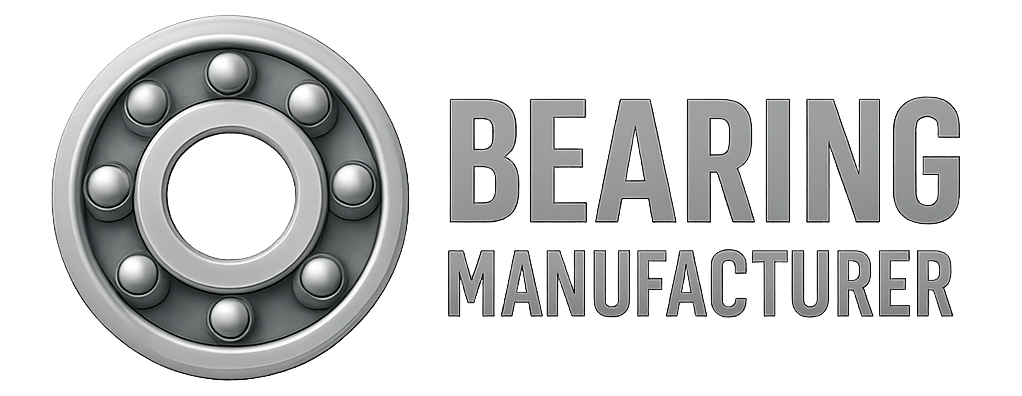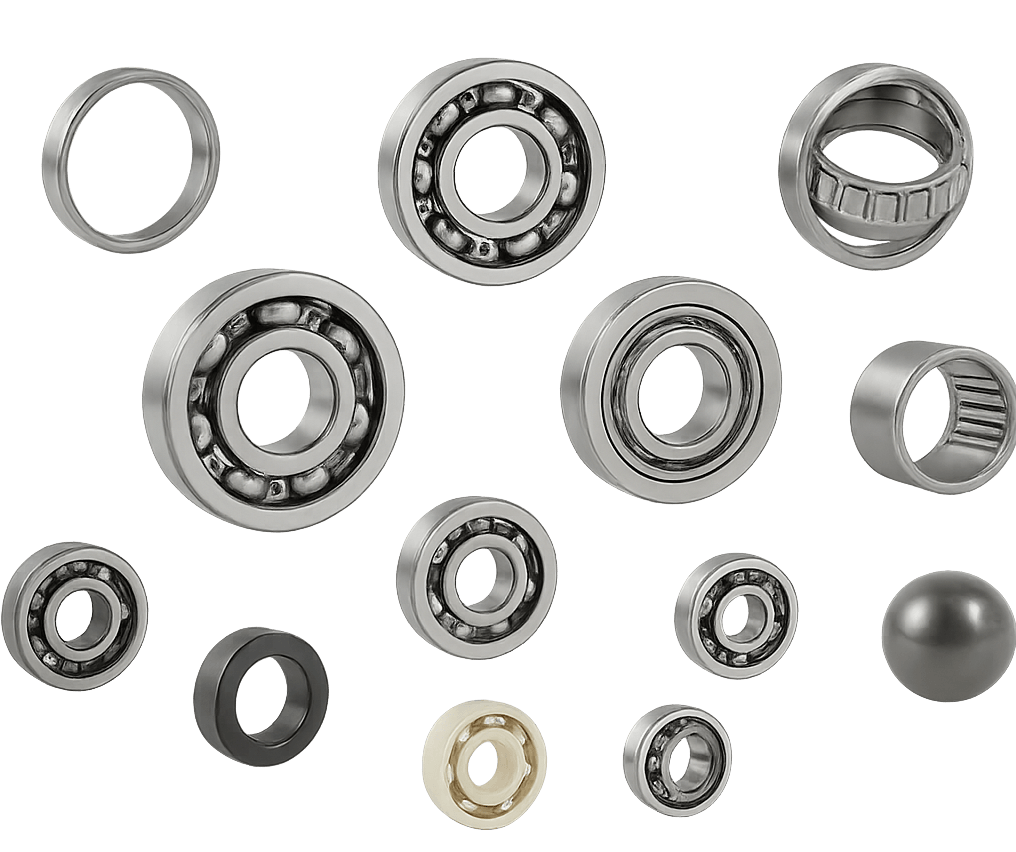In the world of precision engineering and mechanical systems, bearing clearance is a critical factor that directly impacts machine performance, bearing life, and efficiency. Whether in common ball bearings like the 608 or in heavy-duty roller bearings, choosing the correct internal clearance is essential for maintaining reliability and preventing premature failure.
What Is Bearing Clearance?
Bearing clearance refers to the internal gap between the rolling elements (balls or rollers) and the raceways (inner and outer rings) of a bearing. This clearance allows for smooth rotation, thermal expansion, and proper load distribution.
Types of Bearing Clearance
To meet various application needs, bearing manufacturers classify internal clearances into five standardized clearance classes:
| Clearance Class | Clearance Level | Typical Applications & Features |
|---|---|---|
| C1 | Less than standard | For very stable, low-noise conditions |
| C2 | Slightly below standard | Suitable for high-speed, low-play environments |
| C3 | Above standard | Common for thermal expansion or fluctuating temperatures |
| C4 | Higher than C3 | Designed for high-speed, high-temp applications |
| C5 | Highest clearance level | Used in extreme heat or maximum expansion settings |
Radial vs. Axial Clearance
Internal clearance has two primary components:
-
Radial Clearance: The play in the perpendicular direction to the shaft.
-
Axial Clearance: The play along the shaft axis.
Both influence how the bearing handles radial and thrust loads. Improper clearances can lead to uneven load distribution, noise, excessive wear, or even failure.
The Role of Bearing Clearance in Lubrication
Oil Wedge Formation
Correct clearance helps maintain an oil wedge—a thin film of lubricant between the rolling elements and raceways. This film minimizes metal-to-metal contact, reduces friction, and extends bearing life.
Risks to Oil Wedge Integrity
Several factors can disturb this balance:
-
Excessive Heat: Reduces oil viscosity, thinning the film.
-
Machining Tolerances: Misaligned components disrupt uniform lubrication.
-
Improper Clearance: Too tight or too loose clearances can break the film, causing wear or failure.
Bearing Clearance and Engine Performance
In engines, clearances are especially critical. Correct clearance:
-
Prevents bearing seizure or slippage
-
Reduces energy loss due to friction
-
Ensures consistent oil pressure
-
Improves fuel efficiency
On the other hand, incorrect clearance can reduce power output and shorten engine life.
Tight vs. Loose Clearance: Which Is Better?
Theories Behind Each Approach
-
Tight Clearance: Promotes consistent oil pressure and even load distribution. Ideal for quiet, stable, long-life applications.
-
Loose Clearance: Reduces friction and heat, preferred for high-speed operations but may compromise oil pressure.
Engine-Building Insights
Engineers often follow a general rule:
Clearance (in inches) = 0.001 × Journal Diameter (in inches)
For example, a crankshaft with a 2.45-inch journal would require ~0.00245 inches of bearing clearance.
However, this is just a guideline. Builders may adjust clearance to favor oil cooling, pressure balance, or power output.
Loose vs. Tight Clearance: Comparison Table
| Aspect | Looser Clearance | Tighter Clearance |
|---|---|---|
| Friction | Lower, smoother rotation | Higher due to closer contact |
| Oil Temperature | Typically lower | May be higher |
| Load Distribution | Less even | More uniform |
| Oil Pressure | Can be unstable at low speeds | Stable across RPM range |
| Horsepower Potential | Might reduce due to low pressure | Potential gain from higher pressure |
| Oil Displacement Risk | Higher | Lower |
| Heat Generation | Lower | Higher |
| Bearing Wear | Higher under load | Higher in frequent start-stop conditions |
Bearing Clearance and Oil Pressure: A Delicate Balance
Clearance directly affects oil pressure. Wider clearances reduce resistance to flow, resulting in lower pressure. Oil viscosity further modifies this behavior:
-
Higher viscosity oils raise pressure and resist flow.
-
Lower viscosity oils flow freely but may drop pressure too much.
Choosing the correct clearance in combination with the right oil viscosity ensures consistent pressure and protects the bearing system.
Conclusion: Choose Wisely, Perform Reliably
Bearing clearance isn’t just a technical detail—it’s a performance-critical parameter. Whether you’re selecting standard C3 bearings for general machinery or custom-specifying clearances in high-performance engines, the right choice directly influences efficiency, durability, and success.
At Bearing Maker, we offer expert guidance and top-tier bearing solutions to help you match the right clearance to your application. Contact us to ensure your equipment runs smoothly and efficiently for years to come.

